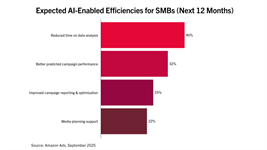In the rapidly evolving landscape of business technology, automation and artificial intelligence (AI) platforms have become indispensable tools for small to medium-sized businesses (SMBs). As leaders seek to enhance operational efficiencies, understanding the comparative strengths and weaknesses of these tools is essential. This analysis will focus on two prominent automation platforms, Make and Zapier, as well as two AI content generation tools, OpenAI and Anthropic. An examination will be conducted on their strengths, weaknesses, costs, return on investment (ROI), and scalability.
Make, formerly known as Integromat, is recognized for its advanced workflow automation capabilities. Unlike Zapier, which predominantly relies on a linear workflow approach, Make offers a more visual interface, allowing users to create intricate, multi-step automations with ease. This flexibility makes it particularly appealing to organizations seeking to streamline complex processes that require conditional logic or multiple data transformations. However, this sophistication comes with a learning curve that may deter less tech-savvy users. In terms of pricing, Make follows a subscription model that scales based on the number of operations, which may prove cost-effective for organizations with heavy automation needs, but could lead to unexpected costs for those unfamiliar with the operational limits set by the platform.
Zapier, on the other hand, is widely lauded for its user-friendly interface and extensive integration capabilities. With thousands of pre-built applications to connect, Zapier excels in providing a straightforward solution for businesses aiming to automate repetitive tasks quickly. Its tiered pricing structure allows SMBs to select a plan that suits their automation frequency; however, this can become a limitation when scaling operations, as higher tiers may be necessary to access essential features or increased task volumes. Though typically more affordable for smaller workflows, Zapier’s pricing can escalate substantially as the complexity of automations grows, potentially diminishing its ROI for rapidly expanding businesses.
In contrast to these automation platforms, AI tools such as OpenAI’s GPT and Anthropic’s Claude are making significant headway in content generation and decision support. OpenAI utilizes a powerful language model that can generate high-quality text with remarkable eloquence, making it a popular choice for brands seeking to enhance content marketing. Its API pricing, based on usage, can offer flexibility for businesses, although costs can accumulate quickly as operations scale. The primary advantage of OpenAI lies in its ability to produce highly contextualized outputs, thus making it a strong candidate for tasks ranging from customer engagement to creative writing. However, businesses must consider potential compliance and ethical implications associated with AI-generated content, particularly regarding transparency and misinformation.
Anthropic’s Claude presents a more safety-conscious alternative, heavily focused on ethical considerations and user control. Its design promotes user alignment and aims to reduce biases, a significant concern in AI deployment today. Nonetheless, Claude often falls short in terms of raw performance and versatility compared to OpenAI, potentially requiring users to invest more time in content refinement. While the premium on ethical AI may appeal to some organizations, it is critical to weigh this factor against operational demands. Both platforms provide essential documentation and support, yet the effectiveness of each largely depends on the specific needs of the user.
When comparing these tools, the balance between initial costs and long-term ROI remains paramount. While Make and OpenAI can undoubtedly require larger investments in terms of both monetization and employee training, the return through time savings and enhanced productivity can be considerable. In scenarios where workflows are complex and demanding, the additional capabilities offered by Make may justify its price point. For straightforward automation and text generation, Zapier and OpenAI may provide a more budget-friendly alternative, particularly for businesses in early developmental phases or those with modest demands.
Scalability is another critical aspect when adopting these platforms. Make allows for extensive customization, which caters well to growing businesses aiming to develop intricate workflows as their needs evolve. Conversely, Zapier, while initially more scalable for basic operations, can encounter limitations as the automation architecture becomes more sophisticated. Similarly, OpenAI’s model can easily adapt to increased usage, whereas Anthropic’s currently may lag behind in scalability due to its focus on safe and ethical deployment.
In summary, the choice between these platforms should hinge on the specific needs of an organization and its strategic objectives. Leaders should assess both the immediate costs associated with implementation and the potential long-term benefits. Data-driven decisions rooted in clear metrics of productivity and budget constraints will yield the best outcomes. Furthermore, it is vital to incorporate an assessment of ethical implications and compliance needs as part of the evaluation process.
FlowMind AI Insight: As organizations undertake the critical journey towards automation and AI integration, leaders must scrutinize not only the economic aspects but also the broader implications including ethical AI usage and employee adaptability. A well-balanced decision will position companies to harness the full potential of technology while ensuring sustainable growth.
Original article: Read here
2025-09-16 10:55:00

